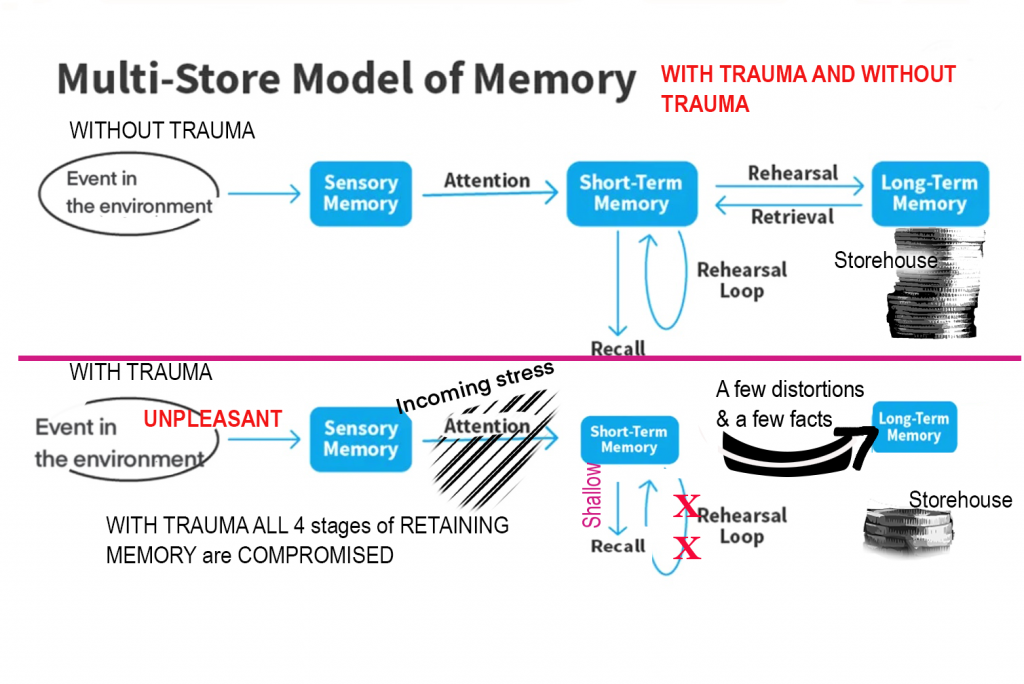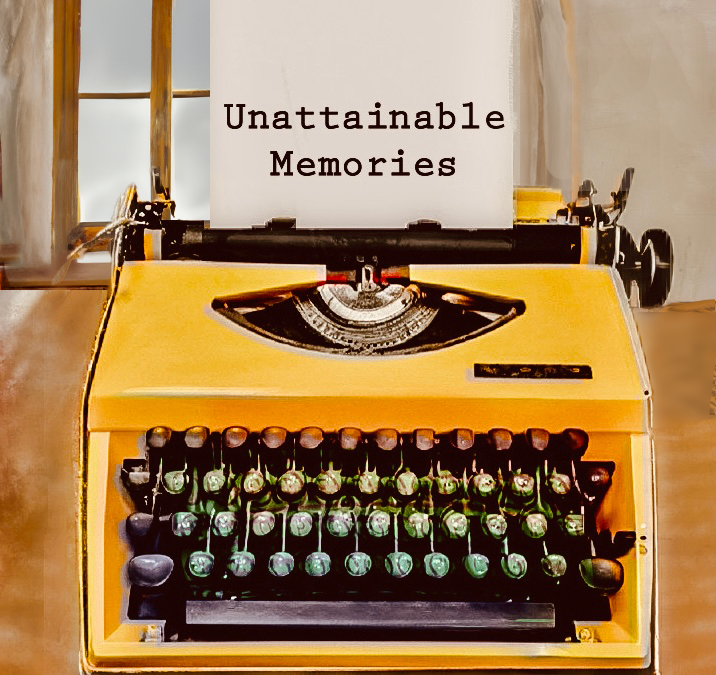I often join in the “chorus” when I hear someone lament that they don’t have many childhood memories. In decades of listening to life stories it has always been true that those with pleasant memories and family traditions have an avalanche of memories when they are given the slightest verbal cue that recall is welcomed — even encouraged.
For those of us that grew up in conflict ridden homes, the process stalls out and we are embarrassed by the lack of memory. Our long term memory has nothing stored away.
__Nita Andrews
I have found, in my life, that if someone is curious about a detail inside my childhood bedroom the memories are technicolor. I know the model of the TV that sat at the foot of my bed. I know the paint colors on the wall and the posters I had as a teenager. If you are curious about the decor anywhere else in my childhood home I only have broad brushstrokes of styles of furniture or the color of chair or couch but no details and certainly no stories. There is one exception, the gas fireplace. I would drag chairs across the den and make a walled in room. I was a poetic, moody, and introspective youngest child. I have vivid memories of spending hours reading novels in this “box” while I warmed my feet. This place, where my feet could rest on the warm bricks beside the fire, had a vibe of safety strong enough to overwhelm the angry and explosive possibilities that filled up the air molecules of the rest of the communal spaces in my childhood home. I believe a sense of safety allows us the margin to make a deposit in the “memory bank.”
————–
Not having stories hurts. If you are like me you want to have a word to write down on the blank page. It is the chronic, day-to-day nightmares that the brain drops out of sight. Why? With a talking day that is part of a public tragedy the story gets codified and recorded all over the neighborhood and on the six o”clock news. The shocking event is retold often enough that your memory has many chances to clarify what “hit” you. *See the chart below to see the role of rehearsal and recall in long term memory.
With an environment that is negative in a chronic way there is so much stress on the child that unless they are writing a memoir, they don’t want to stop, tune in, and make a mental list of their feelings. They want to detach and dissociate. Today you would see a child sit and scroll through mindless content on their phones while a whirlwind of painful content makes the room a pressure cooker. A decade later when you ask that child about their memories that day (and possibly a year or two) the details are greyed out or wiped completely off the calendar.
Here is a poem about how life swirls away from your grasp. It is unattainable, out of reach and reveals itself in the architecture of memory.
Fruit(for Czeslaw Milosz)
How unattainable life is, it only reveals
its features in memory,
in nonexistence. How unattainable
afternoons, ripe, tumultuous, leaves
bursting with sap; swollen fruit, the rustling
silks of women who pass on the other
side of the street, and the shouts of boys
leaving school. Unattainable. The simplest
apple inscrutable, round.
The crowns of trees shake in warm
currents of air. Unattainably distant mountains.
Intangible rainbows. Huge cliffs of clouds
flowing slowly through the sky. The sumptuous,
unattainable afternoons. My life,
swirling, unattainable, free.
ADAM ZAGAJEWSKI

Come Back Next week for Part 2. we will be watching a 5- minute video and discussing the Multi-Store Model of Memory in Greater Detail
| not assigned | The Trauma Experience |
Related Posts
- 3 Trauma Stories & 3 Take-Aways
- Automatic Obedience and Other Reactions
- Defining the Word Trauma
- Distortions of Beliefs
- Efficacy
- Exile Trauma
- Overfunctioning can be a Side Effect of Skipping a Talking Day
- Part Two- Unattainable Memories
- Paucity (Speech Pattern)
- The True Self & Trauma
- Time is Scrambled/*not linear
- True Self Part #2
